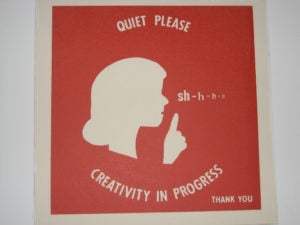The secrets of creative people and how to become more creative
The mysteries surrounding creative people are endless. We might imagine them painting an oil colour masterpiece in their chic Parisian apartment filled with clutter and antiques. After all, that is what they need to be creative or is it not? We also assume that creative people were born with a gift, a gift that seems far out of reach for normal people. The truth is, creative behaviour and thinking can be trained and learnt.
I looked at creative people in history and learnt something extraordinary that they have in common: creative people love routine. Famous Japanese author and philosopher Haruki Murakami (the author behind ‘Kafka on the Shore’) is a good example. Murakami openly admitted that he sticks to the same routine every day. He does his writing from 4am to 12 pm most days and then also goes to bed at 9pm every day. He stated that he keeps to this routine every day without fail.
Or take Ludwig van Beethoven for example. Beethoven also stated that he carried out his creative work from 6am to 3pm every day. Beethoven also had the habit to routinely go for solitary walks in parks as he found those walks to be particularly inspiring.
The process of coming up with ideas can be extremely diverse and no one approach is the best one. Group and solo brainstorms are very popular. A group brainstorm allows the participants to bounce off ideas with each other while a solo brainstorm may work well if a person is not restricted by a time and place and has less resources such as other team members available to them.
There are also several ways to come up with ideas:
- The Question-based approach: use assumptions about your client/campaign and expand on them. Go from there to develop ideas deeper.
- The Opportunity-based approach: redefine opportunity by challenging current statements and then expand on those.
- The Wish-based approach: ask for the impossible (such as if budget was no issue) and build your ideas from there.
Certain content types tend to have more social currency (meaning they are more likely to be shared across the internet) than others:
- Funny content: funny content makes us laugh instantly and we want to share this positive emotion with our friends
- Win content: we like content that offers us something useful we can apply in our lives (such as ‘How-to’s’.
- OMG content: we like content that we find shocking like for example something we have never seen before.
- Cute content: animal-based content and its popularity is a great example for that.
- Trashy: content that mocks other people is an example for that.
- Fail: fail compilations are a way to laugh at other people’s (less severe) accidents.
- WTF-type of content: WTF content consists of unbelievable events that shocks us and that we want to share with our friends.
These easy-to-follow steps will make it easy for you to train your brain on a daily basis to become more creative:
- Write a list of ideas every day. This could be on any sort of topic like what you want to do on your next holiday
- Passion. If you don’t feel truly passionate about an idea and its development, leave it.
- Read more. The research phase will naturally help you cultivate your ideas
- Ask an outsider who is totally unrelated to your topic. A fresh set of eyes and ears will give you valuable input.
- Profile more. Think about who the end user is and how your campaign benefits them.



